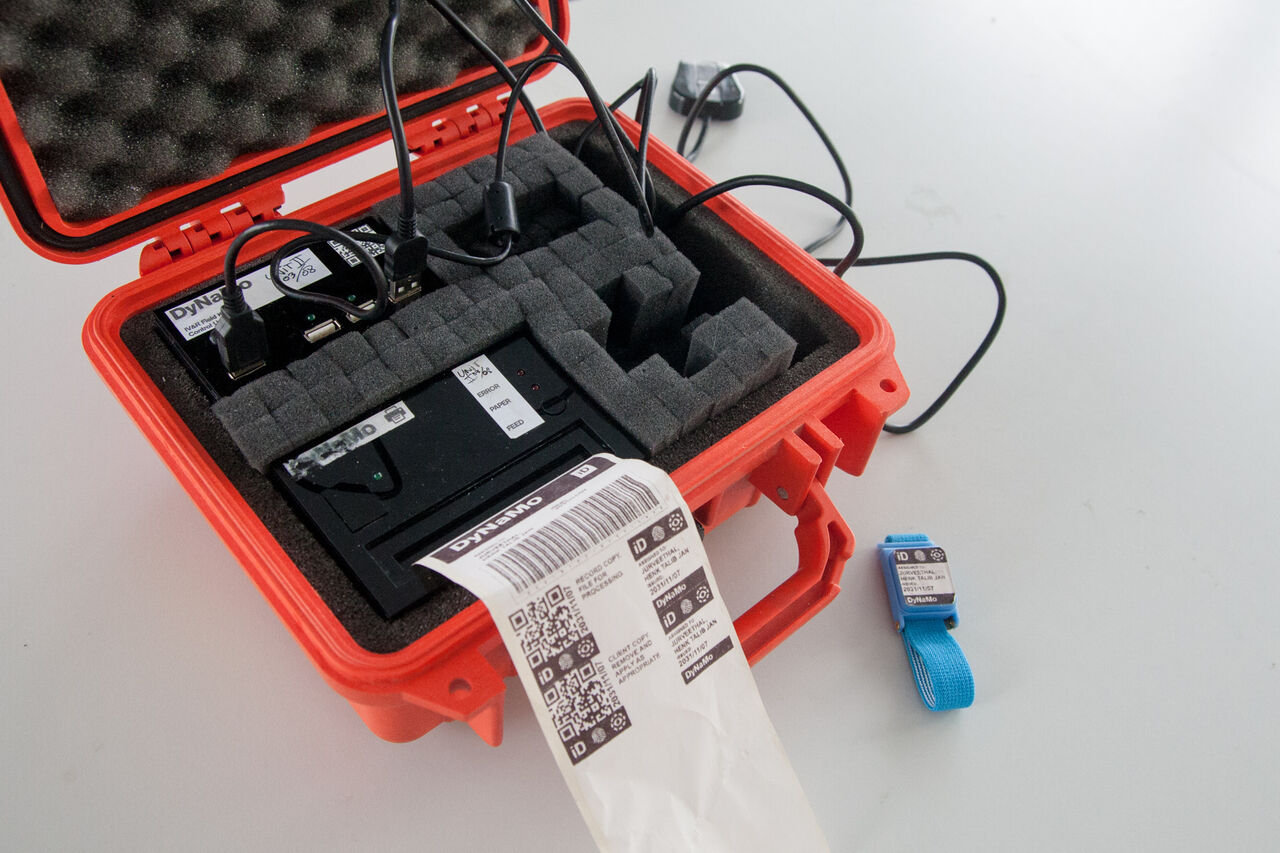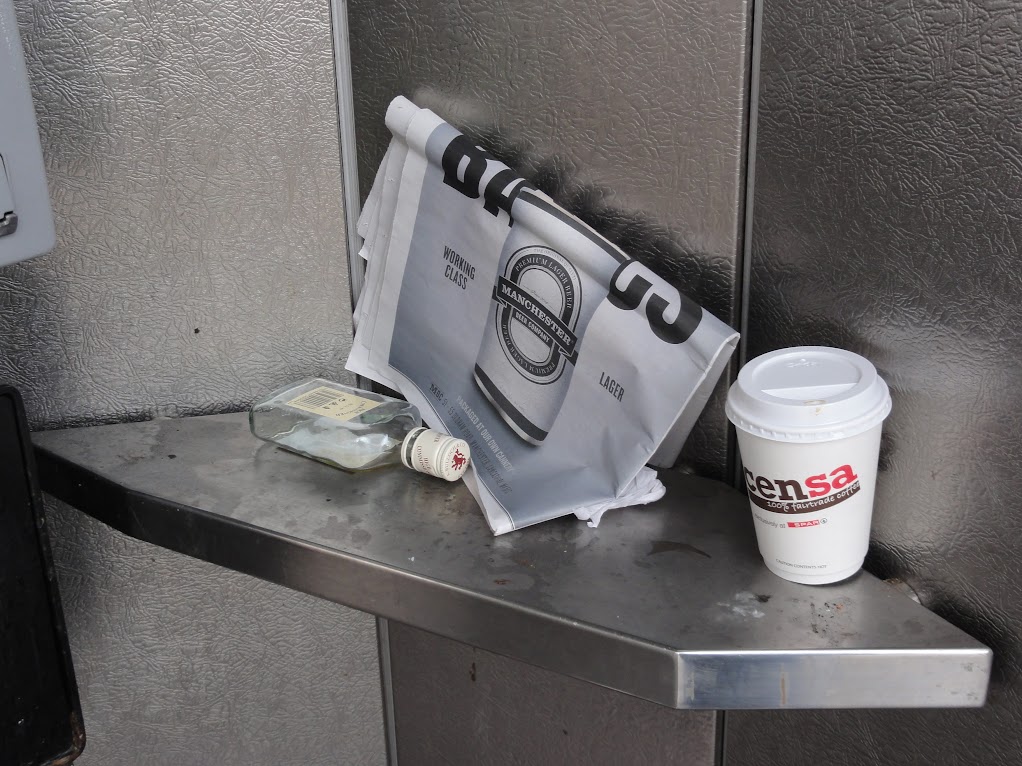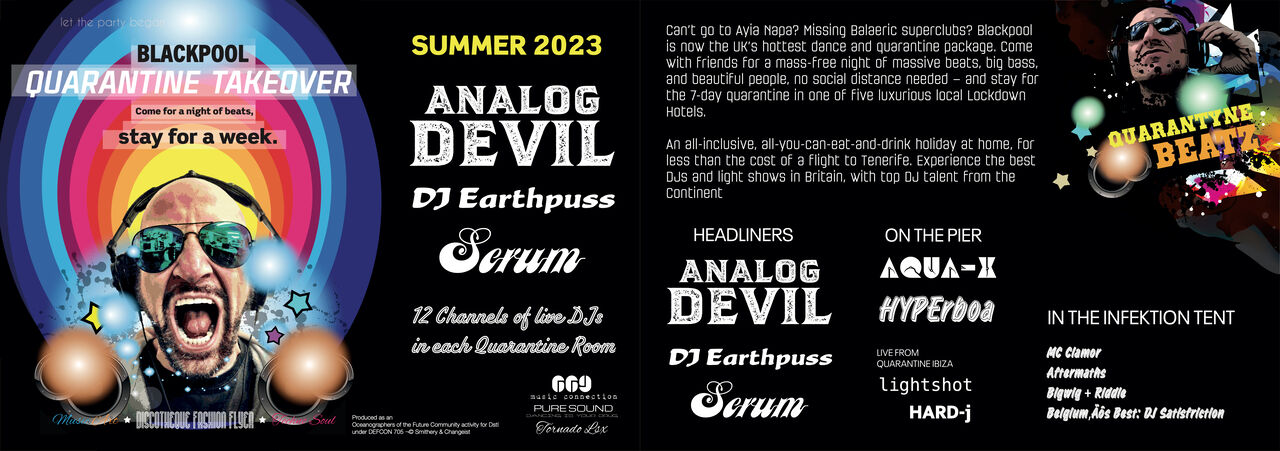Calibrating Experiences of the Future
On familiar forms in unfamiliar circumstances.
Including examples of the author’s work at Changeist, “mixing the grounded with imaginative, the baseline with unexpected, and the real with visionary to ask provocative questions and illuminate new possibilities.”
Creating written or fabricated artefacts to communicate possible futures is probably the most fun part of working in the futures field. As the final step in a longer process, artefacts often offer the widest latitude to engage the intended audience. Yet, as much as it would seem like the perfect moment to go full sci-fi and amp the weird up to eleven, this is actually a time to carefully calibrate the content, form, and delivery of whatever you create, to best convey the future you are aiming for and why it’s interesting or important. In over a decade of doing this kind of work, one thing we’ve learned is the value of enabling people to connect usefully with any future one creates or elaborates by carefully crafting any approach to suit the context, as well as the audience.
Just as no two futures are the same, the moments, contexts, and windows of receptivity to the communicated form of a future will also vary. A wrenching jolt to another reality, a shock to a reader’s system, or conspicuous culture jamming can be disorienting for audiences, and will make it harder for them to feel immersed in a possible future. Conversely, landing too lightly, too politely, or too ambiguously risks wasting a vital opportunity to change perspectives. Calibrating where to land in the space between now and the future you’re transporting your audience to takes careful consideration.
Start as you mean to go on
As my colleagues and I at Changeist address in our book How to Future: Leading and Sense-making in an Age of Hyperchange “A practical guide for everyday futuring in a complex world... How to Future provides accessible, agile approaches which can be scaled up or down to illuminate new futures for big organizations, or clarify complexity for a few colleagues around a table”.
—https://www.howtofuture.com/ thorough scoping at the outset is an important element of good engagement, providing the information needed to meet an audience where they are. Not every speculative artefact or experience lands the same. Different people and organisational cultures have different idioms, ways of telling stories, and anchor points around the futures they expect or imagine. They have different expectations around what is “advanced” and what constitutes the “acceptable”. Different things can signal normality, hint at inside knowledge, or push buttons of estrangement. Identifying these differences at the beginning of the research process, before the creative activity begins, helps guide thinking about how to establish a productive dialogue with a given audience.

 Photography by Sjef van Gaalen
Photography by Sjef van Gaalen
We’ve had a welcome range of opportunities to observe and test these ideas over the past decade, creating experiential artefacts for some serious-minded audiences who didn’t necessarily opt into future shock: including senior leaders of NGOs and humanitarian organisations; police, health and civil administration bodies; and policymakers and political advisers at the centre of government. We’ve also supported design for public audiences less familiar with the conceits of experiential futures — a more diverse, but equally important group.
One thing these groups have in common, at least in the critical contexts in which we engage them, is an interest in having a conversation about possible, plausible, and preferable futures. These are not necessarily situations where outright provocation or shock is useful or desirable. We’re often looking to create a beachhead for a broader discussion, open up the problem space, and probe collective knowns and unknowns. This often means incremental progress, moving alongside audiences or stakeholders as they move toward a different future, rather than whipping them along at breakneck speed. Space needs to be opened up just ahead for discussion, speculation, and sense-checking — meeting people where they are and taking them where they can go; gauging what is most advanced, yet still acceptable.
In these situations, when calibrating our approach, materials and content, we take the measure of critical but less tangible issues: the culture of the audience (social or organisational), common idioms about the “big F” Future as a cultural object, as well as where the “small f” future manifests itself in the present — in everything from the claims of advertising to the small print of instruction sheets, ingredient lists, and warning labels. These last items, often overlooked in the in acts of intentional audience estrangement, are the kinds of things that anchor an object or experience in a familiar reality, and are, consequently, one of the places we like to focus our attention.
We also favour forms and formats that can act as a bridge from the familiar to the less familiar, from the now to the new; for example, by mixing the affordances of familiar artefacts, rituals, or media with carefully selected shifts in content or use. When some Earth-shattering innovation or disruptive change shows up in an alien form in our lives, a shadow of this alien’s existence also appears as a tick box on a licensing form or tax declaration. The COVID-19 pandemic rumbled into our world accompanied by people in (then) shocking PPE garb, for example, but it also manifested through simple pavement markings and hand-printed shop signs.
We look for familiar forms as a way to walk, not run, toward new futures. In our work exploring the future of humanitarian assistance for the International Federation of the Red Cross and Red Crescent Societies, see Speculative Humanitarian Futures. we used field equipment, maps, fundraising videos, and worker clothing as recognisable touchpoints. Though these forms were familiar to career decision-makers in this sector, we depicted them being used in ways that were more novel, and perhaps even unsettling, to this particular audience.

 Photography by Scott Smith
Photography by Scott Smith
In a project where we collaborated with Near Future Laboratory around the future of Big Data, see Winning Formula we selected a daily tabloid newspaper as a way to convey stories about data’s possible future impacts on sports. This was a sufficiently familiar media format for people to pick up copies when we put the fictional papers in public places, such as the front benches in a sports museum, or a newspaper stand in a betting shop. The result was a series of conversations about the desirability of a data-shaped future with people who would not have ventured into a technology exhibit on their own. The newspaper included many of the familiar features, columns, ads, and indicia that signal “daily paper”, down to the weather forecast and (non-working) barcode.
In a more recent demonstration exercise, a 24-hour experiential futures sprint for a government policy team, we chose pre-election “door drops”, or direct mail, imagining the issue landscape several years ahead. These included pamphlets for new vaccine trials, free pre-loaded transport cards for an imagined new light rail system, and a flyer for a government-managed quarantine rave organised to let restless voters in a swing district blow off steam during pandemic lockdowns.
Direct mail is a peri-political type of object, something that is a common accessory of political campaigns in many parts of the world. Everything from flyers about community issues to pizza delivery coupons to direct campaign mailings finds their way into the mail that slips through the mail slot onto your doormat. Most direct mail speaks to a general audience, so it isn’t likely to contain information about radical innovations or fringe political groups. It does, however, reflect a boundary between disruptive issues and core political constituencies. Things that hit the direct mail threshold are potential, plausible issues that can shape policy. They are familiar, daily objects, but may be intentionally designed to provoke or mobilise. We chose this form precisely for its combined simplicity and as a demonstration of the power of mundane objects to invoke a future.
 Flyer design by John V. Willshire/Smithery
Flyer design by John V. Willshire/Smithery
In this last case, the client received a selection of more familiar analysis documents in different formats, including some scenarios, a set of fictional news articles covering similar issues, and our fictional future door drop bundle. They got the best of both worlds: a range of outputs that could appeal to context-specific needs regarding form and content, but which together made a complementary set.
Plausibility = enough impact
None of these pieces were intended to be shocking. A newspaper, map, or rave flyer might be missed if you aren’t looking closely, but can startle the reader on closer inspection. These artefacts’ plausibility, coupled with familiarity, helped the intended audience lower their guard, so that the details of the content, and the juxtaposition of familiar and new, became a provocation for deeper exploration. Of course, these decisions are hard to value without a way of monitoring impact. In the cases above, we received limited — but generally complimentary — feedback. We succeeded in showing how futures explorations can cover a range of possible formats, delivered as contrasting forms.
The next situation for which we design communication artefacts will likely vary from the above examples. Different issues, timelines, audiences, and many other variables might lead us to opt for hard-hitting emotional impact or to stimulate public debate or create a puzzle to unpick around a particular future. Everything we’ve learned in the situations we’ve experienced so far will go into calibrating the next approach. You can rest assured that we won’t end up with the same response. That’s the fun of it.
🝓